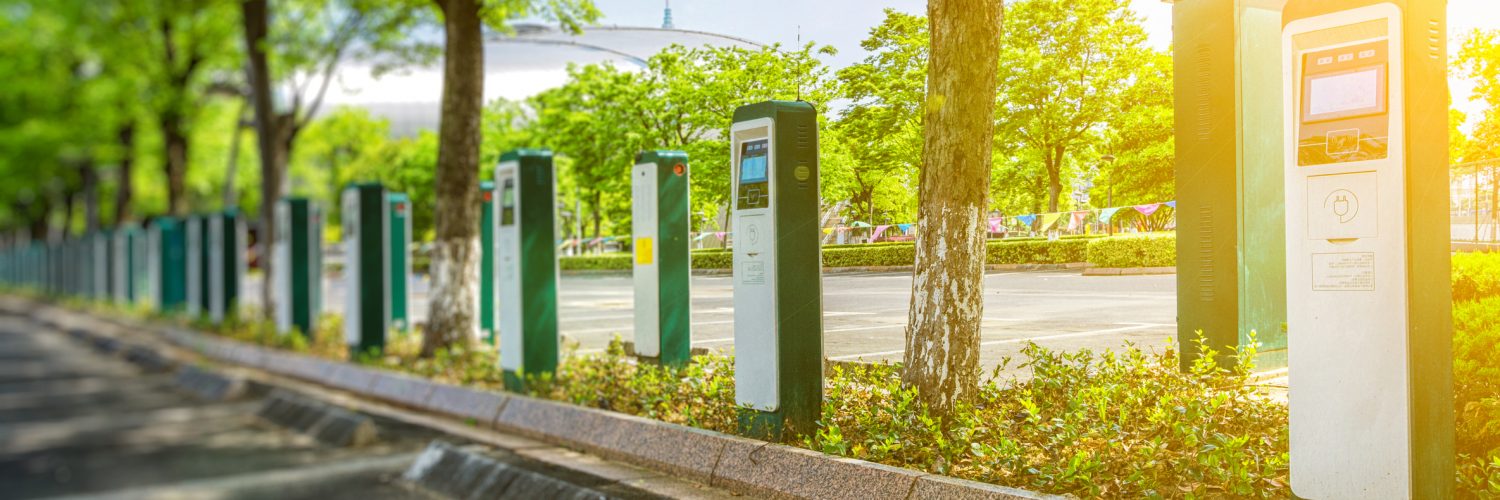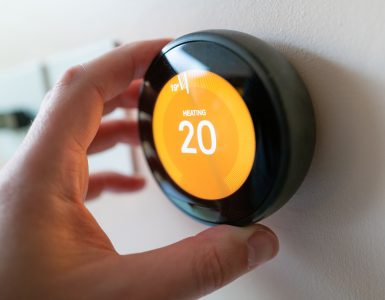Experts increasingly agree that in order to combat climate change and transition fully to carbon-free energy, we need to electrify everything. For consumers, that means thinking about how you heat and cool your home, how you get dinner to the table, and what you drive.
This transition will come with many benefits. Electric vehicles and appliances reduce pollution and our reliance on fossil fuels. Induction stoves are more energy efficient and reduce indoor air pollution. Heat pumps keep our homes comfortable while saving on energy bills. And importantly, when all of these things are powered by electricity instead of other energy sources, they can run on renewable energy.
People opposed to large-scale electrification say that the grid can’t handle such a large increase in demand. While it will be difficult to electrify everything, we can absolutely do it over the next few decades. Yes, there will be challenges – like infrastructure upgrades and supply chain issues – but there are smart ways to tackle them and get us where we need to be.
For example, a key component will be giving both utilities and consumers real-time information about what supply is available and how it could best be utilized to benefit not only a single home, but the whole grid.
Electrifying everything can work. In this article, we’ll explore how.
How the grid operates and reacts to increases in demand
Electric utilities have the difficult job of constantly matching energy supply and demand. When that balance is achieved, all of our lights, appliances, and electronics work without a hitch. But when demand increases or supply falters, utilities have to figure out how to maintain reliability without making energy unaffordable.
Here’s how utilities currently respond to increasing demand and the challenges that come with them:
1. New power plants
Connecting new power plants to the grid, whether to increase baseload power or to supplement peaking power, like in a heat wave or snow storm, is an expensive and lengthy process.
Power generators and the utilities that transmit and distribute electricity are decoupled in most areas, which means that two different groups have to work together to bring new power online. That creates additional steps and red tape.
When a new power plant is proposed, it has to undergo surveys and assessments that can take years to complete. According to research from Lawrence Berkeley National Laboratory, it currently takes about four years to connect a new power plant to the grid. In order to electrify everything, we’ll need to speed up that timeline significantly.
2. New cables and transformers to handle capacity
Once power is generated, it must then be sent from a solar or wind farm to a home or factory many miles away. Transmission lines carry electricity from power plants at a high voltage that helps to reduce power loss over great distances. Once it arrives at a substation, transformers step down the voltage so that it can then be distributed for use in homes and businesses.
All of that equipment – transmission lines, transformers, and distribution lines – have to be built out when new power generators are added to the grid. And that infrastructure is expensive.
According to the Niskanen Center, the average cost of transformers has risen by a factor of two to three since 2020. It also takes longer for utilities to receive new equipment than it used to. If a utility orders a transformer today, they won’t get the critical infrastructure for another one to two years.
3. Next generation smart meters
Another upgrade needed in order to increase capacity is next generation smart meters with data collection, grid controls, and customer programs built in. Having better real time data to predict, respond to, and manage demand allows utilities and consumers to work together, increasing reliability of the grid, but that will require the right type of technical investment.
All of these capital investments have to be approved by regulators who will be critical of large price tags. That’s why utilities are exploring more efficient ways to improve the grid and build out the capacity we’ll need for an electrified future, while keeping energy costs affordable.
Getting smart about managing the increase in capacity
All of these problems may seem daunting, but there is a viable path to electrifying everything; it just requires smarter solutions.
According to most estimates, we need to double or triple electricity capacity in order to reach net-zero emissions by 2050 while finding ways to improve energy efficiency across homes nationwide. The good news is that there are now more government policies in place to help us get there. The Inflation Reduction Act invests billions in domestic clean energy production, electric vehicles, and includes tax credits and rebates for energy efficient upgrades in your home.
So, how do we best tackle this problem now that we have a bit more support?
Renewable energy generation
The EIA reported that this year, more than half of new electric-generating capacity will come from solar. The cost to develop solar projects is cheaper than fossil fuels. Thanks to a 30 percent tax credit for renewable energy facilities in the IRA, solar will continue to be the most attractive option for power generators going forward.
Battery storage capacity has also grown rapidly and will more than double this year. This growth will ensure that solar power generated during the day can be used at night and on cloudy days.
But many clean energy projects are currently being delayed by bureaucratic processes. In fact, there is a backlog of clean energy projects waiting for connection approval that would get us close to where we need to be by 2050. The entire U.S. electric grid, including every fossil fuel plant, currently has 1,250 GW of installed capacity. The backlog of clean power includes roughly 1,300 GW of solar, wind, and energy storage projects.
In order to electrify everything, we’ll need to get these projects from the queue to the grid much faster. We can do it, but it will require changing both how utilities plan for the future and the regulatory model that incentivizes them to make the right choices.
Replacing old equipment
There is no way around making capital improvements to grid infrastructure. The U.S. grid is aging and many of the components, especially transformers, need replacing in order for the grid to remain operational and reliable.
According to a Department of Energy report, the average transformer in America is about 40 years old, which is near the end of the equipment’s operational life, and 70 percent of transformers are older than 25 years.
Doubling or tripling electric capacity in the coming decades will require upgrades to existing infrastructure as well as new equipment, but more effective load management will be crucial as well. When we can optimize energy consumption relative to energy generation or supply through insights provided by next generation smart meters, we can minimize the stress on the infrastructure, which means reducing the amount of replacements that need to be made.
Distributed energy resources
Distributed energy resources (DERs) will also play a major role in the energy transition. DERs are small-scale installations that generate electricity locally where it will be used—for example, rooftop solar panels, battery storage, or a solar micro-grid. DERs not only add capacity, but do so while requiring less transmission infrastructure because they only require distribution lines to get the electricity from the source to the customer. This makes them cheaper to add to the grid and also means there is little to no power loss between the power generator and the user.
With the IRA and the lower costs of solar and electric vehicles, residential customers will be able to contribute to the grid and help balance supply and demand.
In fact, in California where the governor issued an order requiring all new vehicle sales to be zero emission by 2035, the public utilities see EVs as a critical piece of grid stability, not just a source of new demand. PG&E and SCE are both working on systems that will leverage EVs as bi-directional chargers where the batteries can contribute to the grid in times of peak use.
Electrifying everything will require better data and better customer experiences
All of those improvements won’t be enough without smart tools to manage it all. Today, utilities can only detect how the grid is performing between the power plants and the transformers. Any issues that occur between the transformers and the customers’ homes are unknown. Grid-edge intelligence, or data and insights gathered where the energy is consumed, will help utilities to better understand what’s happening at every point, from energy generation all the way to powering a customer’s appliances.
These types of tools will allow utilities to forecast power demand and ensure reliability throughout the day. They will also open the door to customer-focused programs that empower people to take advantage of off-peak pricing and to make more energy efficient decisions throughout their home.
Utilities and customers will have to work together in order for large-scale electrification to work. That’s where Sense comes in.
A utility is only as reliable as its infrastructure network. Grid-edge intelligence like Sense can help utilities to detect issues before problems occur. Sense will be able to identify cables and transformers that are failing so that utilities can provide that information to regulators and get approval for needed investments.
Sense also helps customers by finding ways for them to save energy in their homes. It shows customers how much energy they’re using, when, and on what devices. This lets customers identify energy hogs and opportunities to save money.
The most natural time to upgrade to a more energy efficient appliance, like a heat pump or induction stove, is when the old version needs replacing. Sense is working to detect when there are problems on a customer’s devices indicating it might be time to replace them. It also promotes initiatives for inefficient devices and energy-efficient behaviors.
Most importantly, Sense bridges the data gap between utilities and customers so that the grid and customers both benefit. It can facilitate demand response programs where utilities can reduce the energy load of participating customers’ homes at peak usage hours to alleviate strain on the grid. Many of these programs pay users to enroll as an added incentive.
Sense can also save customers money with time-of-use management. That’s when customers are encouraged to shift energy use to times of the day when energy prices are lower—for example, charging an EV earlier in the day or overnight instead of during peak evening hours when the grid is most taxed and energy prices are highest.
Stay optimistic
Electrifying everything and increasing our electricity capacity to handle the new demand won’t be easy, but it’s doable with the right resources, tools, and technology.
At Sense, we’re proud to be playing a role in the energy transition. But we can’t make this transition work without you. Keep an eye out for Sense in your region as your utility seeks to upgrade the smart meters on homes in your neighborhood and petition your public utility commission to bring Sense to your home.


















